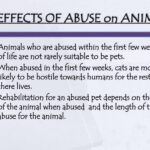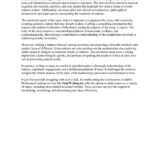The journey towards recognizing and protecting animal rights in the United States has been long and fraught with challenges. From the early days of agriculture to the rampant industrialization of farming, the treatment of animals has evolved dramatically in the eyes of the law and society. The progression towards making animal cruelty illegal is not merely a reflection of changing laws; it represents a fundamental shift in moral perspective. This article delves into the timeline of American legislation addressing animal cruelty, providing a detailed chronicle of pivotal moments that shaped our understanding of animal rights.
To comprehend the landscape of animal cruelty laws, one must first look back to the 19th century, a time when animals were often seen as property rather than sentient beings deserving of protection. The first significant legislation aimed at curtailing cruelty to animals emerged in 1822 with the passing of England’s Cruelty to Animals Act. This act laid the groundwork for movements across the pond, as American reformers observed the evolving societal attitudes toward animals.
By the mid-19th century, the American Society for the Prevention of Cruelty to Animals (ASPCA) was founded in 1866. This organization sparked a movement that fundamentally altered the trajectory of animal welfare in the U.S. The ASPCA aimed to combat cruelty through public education, legislative advocacy, and direct action against perpetrators of abuse. Their efforts served as a catalyst for legislative change, culminating in the introduction of laws that prohibited specific acts of cruelty.
The first state law against animal cruelty in the United States was enacted in 1867 in Massachusetts, marking a watershed moment. The law prohibited acts deemed cruel, such as beating or neglecting animals. This historical milestone laid the framework for similar statutes in other states. However, enforcement of these laws remained inconsistent and often relied on the moral inclinations of individuals rather than systemic accountability.
In the decades following Massachusetts’ pioneering statute, states across the nation began to adopt their versions of animal cruelty legislation. By the early 1900s, many states had implemented laws addressing mistreatment in various contexts, including transportation, entertainment, and agriculture. However, even with these advancements, the vision of a cohesive framework to protect all animals from cruelty remained elusive.
The early 20th century saw significant growth in both public awareness and activism concerning animal rights. With the establishment of humane societies and the proliferation of animal welfare organizations, society’s collective consciousness began to prioritize the ethical treatment of animals. Despite this burgeoning awareness, loopholes within existing laws and a lack of comprehensive enforcement mechanisms rendered many statutes ineffective.
Fast forward to the 1960s and 1970s—a pivotal era characterized by heightened social consciousness regarding various issues, including civil rights, environmentalism, and, crucially, animal welfare. The passage of the Animal Welfare Act in 1966 represented a major legislative advance in the protection of animals. This act initially focused on regulating the treatment of animals used in research and ensured humane conditions for pets during transport. Yet, it fell short of comprehensive coverage for all animals and certain ethical concerns persisted regarding its implementation.
In the ensuing decades, public sentiment surrounding animal rights gained traction, with notable events intensifying the outcry against cruelty. The rise of animal rights organizations and campaigns drew attention to the inhumane practices prevalent in factory farming, the fur industry, and scientific research. As activism surged, so too did legislative responses. By the early 2000s, many states amended their animal cruelty laws, expanding definitions and penalties. These changes reflected an increasingly empathetic approach towards animals and reinforced an emergent public demand for more stringent protection.
The advent of the 21st century brought a renewed urgency and sophistication to animal rights activism. Technological advancements allowed for greater visibility of animal cruelty cases, allowing the public to engage with the issue on a deeper level. Viral videos and social media campaigns galvanized mass participation and advocacy efforts, pressuring lawmakers to strengthen existing laws and close gaps in coverage.
Notably, in 2019, the U.S. Congress passed the Animal Crush Video Prohibition Act, which criminalized the creation and distribution of videos depicting acts of animal cruelty. This law’s passage was hailed as a significant victory for animal rights advocates, illustrating that societal attitudes were progressively aligning with principles of compassion and ethical treatment.
Today, while progress has been made, the landscape of animal cruelty legislation remains patchwork and requires further refinement. Although all 50 states have enacted some form of animal cruelty laws, enforcement mechanisms vary widely, and certain species remain inadequately protected. Thus, the arduous journey that commenced over a century ago continues to evolve as society grapples with its moral obligations to vulnerable beings.
In conclusion, the timeline of U.S. laws addressing animal cruelty reveals an evolving commitment to combating injustice against animals. Each legislative victory signifies not only a step forward in the pursuit of ethical treatment but also a transformative shift in societal values. As the conversation around animal rights continues to unfold, it invites a critical examination of our roles as stewards of the earth and the creatures that inhabit it.







